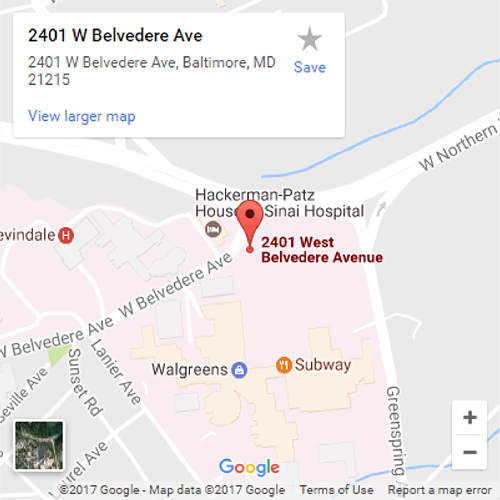Popliteal Pterygium Syndrome
What is popliteal pterygium syndrome?
Popliteal pterygium syndrome (PPS) is a condition that affects the development of the face, skin and genitalia. It is sometimes also called congenital popliteal webbing, popliteal web syndrome or facio-genito-popliteal syndrome. Patients present with extensive webbed skin running down the back of the entire leg, usually from the hip down to the heel. These thickened skin folds are often present bilaterally (on both sides of the body) in affected individuals and cause limitations of motion in the lower extremity at all affected joints.
The pterygium itself refers to a tight, fibrous (scar-like) band of tissue running just beneath the skin, causing the knee joint to become contracted. The important nerves and blood vessels usually present in this area behind the knee lie below this pathologic structure. Less commonly, these contractures may also affect the neck, armpits, elbows and fingers.
From an orthopedic perspective, other than the webbing syndrome described above, patients may have syndactyly (fusing) of the digits of the fingers or toes, malformed toenails, or spina bifida (improper formation of the spinal cord). Patients may also have short stature and vertebral anomalies.
Other overarching clinical findings for this syndrome include facial differences like cleft lip/palate (present in over 90% of patients), fibrous bands in the mouth/eyelids and genitourinary issues like cryptorchidism, (where one or both testes fail to descend into the scrotum), bifid scrotum, or delayed or incomplete development of labia majora. Growth and intellectual development are typically normal in children with popliteal pterygium syndrome.
What causes popliteal pterygium syndrome or is the cause unknown?
Popliteal pterygium syndrome may be inherited from an autosomal dominant genetic mutation in the IRF6 gene on chromosome 1. This gene is a transcription factor that is active in cells that ultimately develop into areas of the body affected by this disorder – the head, skin and genitalia. However, most cases may occur sporadically, without any family history of the disorder. There is an association in sporadic popliteal pterygium syndrome and advanced paternal age.
How common is popliteal pterygium syndrome?
PPS is a rare condition that affects 1:300,000 children, with an equal distribution between male and female patients.
How is popliteal pterygium syndrome diagnosed?
Detection of popliteal pterygium syndrome can occur as early as the first trimester, with the visualization of cleft lip/palate on ultrasound. The remainder of the clinical findings are typically diagnosed by physical exam after birth. These include the characteristic fibrous band of tissue behind the knee and associated knee flexion contracture, as well as manifestations of other commonly involved organ systems (face, genitourinary) as described above. For those with a family history of this disorder, testing via amniocentesis or chorionic villi sampling is available. Postnatally, genetic testing may be used to confirm the IRF6 mutation associated with the autosomal dominant type of PPS.
AP/lateral X-rays of the knee may be obtained to ensure the underlying bony architecture is not contributing to any loss of knee extension. Additionally, MRI scans of the knee may be helpful in the setting of operative planning, as the location of essential nerves and blood vessels may be mapped out, preventing injury during surgical resection of the pterygium.
What are the treatment options for popliteal pterygium syndrome?
The treatment for popliteal pterygium syndrome is largely surgical. There is a minor role for observation in children with milder cases causing less functional impairment. This is rare, however. Most patients face difficulties with walking and activities of daily living due to the severity of joint contracture and instead elect for operative management. This takes the form of surgical resection of the pterygium itself.
The technique involves either cutting (tenotomy) or removal (full resection) of the superficial fibrous band. Once released, there are often neighboring tissues that will require lengthening or grafting to function with the new range of motion of the knee joint. Treatment in these cases may include grafting of the sciatic nerve and/or lengthening of local tendons. Additionally, skin grafting may be required to cover up the back of the leg once more knee extension is achieved.
Comprehensive treatment also includes restoring more normal joint orientation. This can take the form of acute correction with soft tissue release with or without cutting the bone, or gradual correction using an external fixator. With either approach, the goal is to obtain a straight and stable knee, amenable to ambulation.
Why choose the International Center for Limb Lengthening for treatment of popliteal pterygium syndrome?
Deformity correction is a complex process. Your doctor at the International Center for Limb Lengthening will take the time to make sure you understand all of your options and then will customize your treatment to meet your specific needs. Our patients benefit from our team-centered approach with world-renowned surgeons and specialized physician assistants, nurses and physical therapists. We help patients with popliteal pterygium syndrome achieve their best possible result.
Doctors who treat popliteal pterygium syndrome
‡Adults Only
†Children and Adolescents/Young Adults Only



